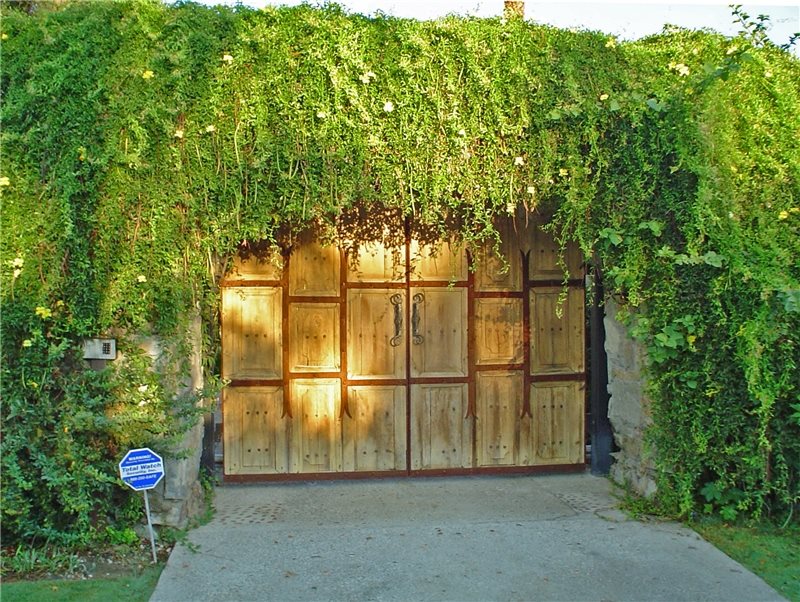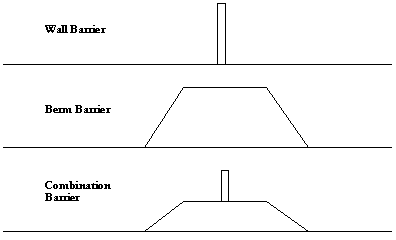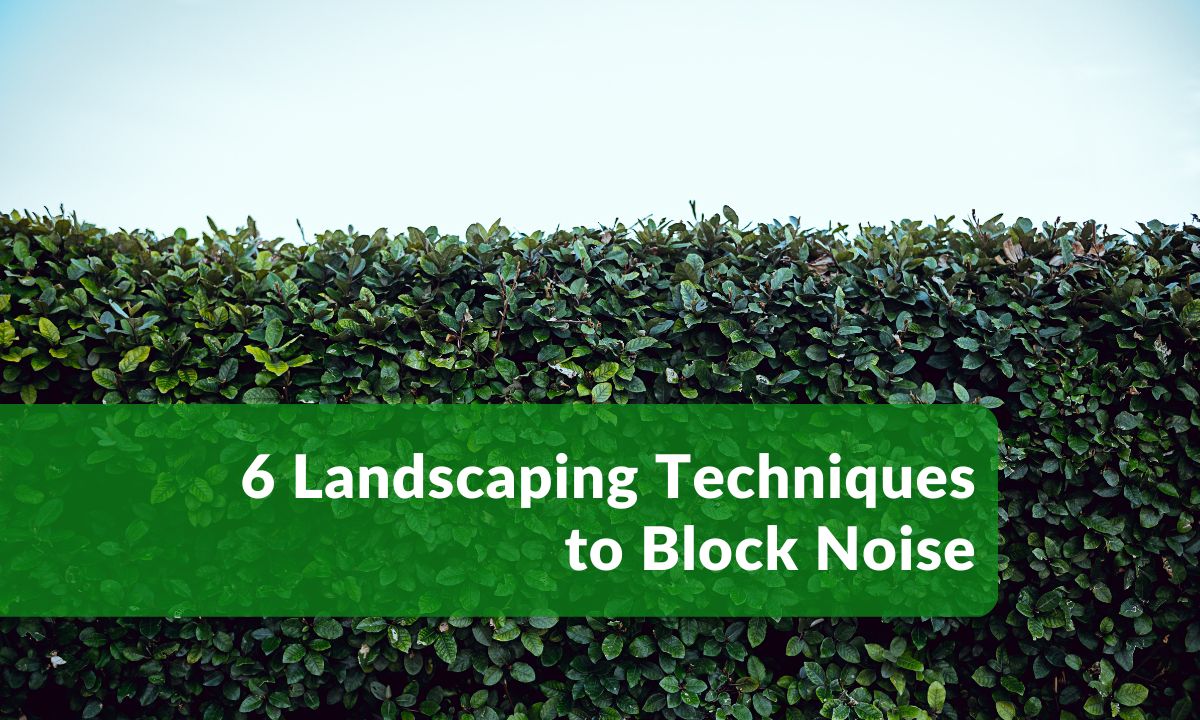To create a sound barrier with landscaping, plant dense trees and shrubs strategically along noise sources. Use earth mounds or fences to enhance noise reduction.
Landscaping serves more than aesthetic purposes; it can also minimize noise pollution. A well-planned landscape can act as a natural sound barrier, creating a peaceful outdoor environment. Incorporating various plants, trees, and earth structures can effectively absorb and deflect sound.

Credit: www.landscapingnetwork.com
Dense foliage, especially evergreen species, can block noise year-round, while earth mounds help further dampen sound waves. Creating a diverse landscape not only improves visual appeal but also enhances acoustic comfort. Implementing these strategies can transform your space into a quieter, more serene retreat from the hustle and bustle of daily life. Take the first step towards a tranquil outdoor experience today.
How to Create a Sound Barrier With Landscaping : Step by Step Guide
Introduction To Soundproofing Through Landscaping
Creating a peaceful outdoor space can be challenging. Noise pollution disrupts our relaxation and enjoyment. Landscaping offers a natural way to reduce unwanted sounds. Plants, trees, and shrubs can serve as effective sound barriers. This guide explores how to use landscaping for soundproofing.
Why Landscaping Can Be A Natural Sound Barrier
Landscaping can significantly reduce noise levels. Here are some key reasons:
- Dense Foliage: Thick plants absorb sound waves.
- Height: Tall trees block noise from above.
- Layering: Different plant heights create barriers.
- Material: Soil and roots also dampen sound.
Using a combination of these factors enhances sound reduction. A well-planned landscape can transform a noisy area into a serene retreat.
The Basics Of Sound Reduction With Plants
Choosing the right plants is crucial for effective soundproofing. Consider these options:
| Plant Type | Sound Reduction Features |
|---|---|
| Evergreen Trees | Thick foliage blocks sound year-round. |
| Deciduous Shrubs | Provide seasonal coverage and noise absorption. |
| Perennial Flowers | Add color and help soften noise. |
Layer plants for maximum effect. Consider these planting tips:
- Plant tall trees along the property line.
- Add shrubs in front for additional coverage.
- Incorporate ground cover plants for a fuller effect.
Carefully selecting and placing plants will enhance your outdoor sound barrier. Enjoy a quieter, more peaceful environment with thoughtful landscaping.
The Science Behind Sound Absorption
Creating a sound barrier with landscaping involves understanding how sound interacts with different materials. Plants and their structures can significantly reduce noise. This section explores how plants absorb sound and the importance of their density and height.
How Plants Reduce Noise
Plants reduce noise in several ways:
- Leaf Structure: Leaves absorb sound waves. Their irregular shapes disrupt sound.
- Branching Patterns: Branches scatter noise, diffusing its intensity.
- Soil and Roots: Soil absorbs vibrations. Roots stabilize the ground, reducing noise transmission.
Dense foliage acts as a barrier. It traps sound waves and prevents them from traveling. A mix of different plant types enhances this effect. The more variety, the better the noise reduction.
The Role Of Density And Height In Noise Reduction
Density and height are crucial for effective sound barriers. Here’s how they play a role:
| Factor | Effect on Noise Reduction |
|---|---|
| Density | More leaves and branches mean better sound absorption. |
| Height | Taller plants block more sound waves from reaching your space. |
Choose plants that grow tall and bushy. Examples include:
- Arborvitae: Provides dense coverage.
- Boxwood: Great for shaping noise barriers.
- Maple Trees: Tall and effective for noise reduction.
Strategically placing these plants creates an effective sound barrier. Consider the layout for maximum impact.
Choosing The Right Plants
Creating a sound barrier with landscaping starts with selecting the right plants. The right greenery can absorb, deflect, and block noise effectively. Understanding the types of plants available helps achieve the best results.
Deciduous Vs. Evergreen: Which Is Better For Soundproofing?
Deciduous and evergreen plants have different benefits:
- Deciduous plants lose their leaves in winter.
- Evergreen plants maintain their leaves all year round.
Consider the following:
| Type | Benefits | Drawbacks |
|---|---|---|
| Deciduous | Great for summer noise reduction. | Less effective in winter. |
| Evergreen | Provides year-round sound barrier. | Can be more expensive. |
Choose evergreens if you want consistent noise control. Deciduous plants work well for seasonal sound reduction.
Top Plant Choices For Creating A Sound Barrier
Selecting the right plants enhances your sound barrier. Here are some top choices:
- Boxwood: Dense foliage, great for privacy.
- Arborvitae: Tall and thick, excellent for wind and noise.
- Holly: Sharp leaves deter noise effectively.
- Juniper: Thick and hardy, good for all seasons.
- Laurel: Fast-growing, dense coverage.
Mix different plants for better sound absorption. Varying heights and textures improve effectiveness.

Credit: blessingland.com
Strategic Planting Techniques
Strategic planting techniques can effectively reduce noise. Using plants wisely creates a natural sound barrier. This method enhances your yard’s beauty and comfort.
Creating Dense Layers For Optimal Sound Reduction
Dense layers of plants work best for sound reduction. They trap sound waves and absorb noise. Here’s how to create these layers:
- Choose a mix of trees and shrubs. Tall trees can block high sounds. Shrubs fill in gaps and reduce lower sounds.
- Use evergreen plants. They provide year-round coverage. Deciduous plants may lose leaves in winter.
- Plant in staggered rows. This method prevents sound from escaping through gaps.
The Importance Of Plant Placement And Spacing
Proper placement and spacing are crucial. Follow these tips for effective sound barriers:
- Plant taller trees closest to the noise source. This blocks the initial sound waves.
- Space shrubs about 2 to 3 feet apart. This allows them to grow dense.
- Mix plant sizes and types. A variety adds visual interest and sound absorption.
Consider using a combination of:
| Plant Type | Height | Sound Absorption |
|---|---|---|
| Evergreen Trees | 15-30 ft | High |
| Shrubs | 3-10 ft | Medium |
| Perennials | 1-3 ft | Low |
Following these strategies enhances your landscape and reduces noise effectively.
Incorporating Hardscaping Elements
Hardscaping includes non-plant features in your yard. These elements help create effective sound barriers. They can block noise from roads, neighbors, and other disturbances.
Types Of Hardscaping That Enhance Sound Barriers
Several hardscaping options can improve noise reduction:
- Retaining walls: These solid structures absorb sound.
- Stone fences: Thick stone can block unwanted noise.
- Brick walls: A strong option for sound insulation.
- Paver patios: They reduce sound reflection.
- Concrete walls: Durable and highly effective against noise.
| Hardscaping Element | Noise Reduction Effectiveness | Maintenance Level |
|---|---|---|
| Retaining walls | High | Low |
| Stone fences | Medium | Medium |
| Brick walls | High | Low |
| Paver patios | Medium | Medium |
| Concrete walls | Very High | Low |
Combining Plants And Hardscaping For Maximum Effect
Using plants with hardscaping creates a powerful noise barrier. Plants can absorb sound and soften hard edges.
Follow these tips for the best results:
- Layer plants: Use tall trees behind shorter shrubs.
- Choose dense plants: They block noise more effectively.
- Mix hard and soft elements: Balance hardscaping with greenery.
- Consider plant placement: Position plants near walls or fences.
This combination improves the aesthetics and functionality of your yard.
Maintenance Tips For Your Sound Barrier
Creating a sound barrier with landscaping requires ongoing care. Proper maintenance ensures your plants remain effective at blocking noise. Follow these tips to keep your soundproof landscape thriving.
Pruning And Care For Longevity
Regular pruning promotes healthy growth and enhances sound-blocking abilities. Here are some key tips:
- Trim regularly to remove dead or overgrown branches.
- Focus on shaping plants for better density.
- Use sharp tools to avoid damaging the plants.
- Monitor for pests and diseases, treating them promptly.
Healthy plants are more effective barriers. Keep an eye on their growth and adjust care as needed.
Seasonal Considerations For Your Soundproof Landscape
Different seasons require varied maintenance approaches. Here’s a seasonal guide:
| Season | Tasks |
|---|---|
| Spring |
|
| Summer |
|
| Fall |
|
| Winter |
|
Following these seasonal tips helps maintain your sound barrier’s effectiveness. Proper care leads to a quieter outdoor space.
Case Studies: Successful Sound Barrier Projects
Exploring real-life examples shows how effective landscaping can create sound barriers. These projects demonstrate practical solutions for noise reduction. Let’s look at successful case studies in both residential and commercial settings.
Residential Success Stories
Homeowners have found creative ways to reduce noise. Here are some notable examples:
- Greenwood Family Home: This family planted dense evergreen trees. The trees block noise from a nearby highway. The result is a peaceful backyard.
- Smith Residence: The Smiths installed a sound barrier wall. They combined it with climbing plants. This improved aesthetics and reduced noise.
- Johnson Backyard Oasis: The Johnsons created a layered landscape. They used shrubs, trees, and a water feature. This design effectively muffles unwanted sounds.
Commercial And Urban Examples
Businesses and urban areas also benefit from sound barriers. Here are some key projects:
| Project Name | Location | Features | Outcome |
|---|---|---|---|
| City Park Revitalization | Downtown City Center | Hedges, trees, and pathways | Reduced traffic noise significantly |
| Office Complex Landscaping | Business District | Sound walls with plants | Improved worker productivity |
| School Playground Upgrade | Suburban Area | Acoustic panels and trees | Safer, quieter play environment |
These examples show how landscaping can create effective sound barriers. They highlight the importance of planning and design. Each project successfully reduced noise and improved quality of life.

Credit: www.enoisecontrol.com
Getting Started On Your Project
Creating a sound barrier with landscaping can be fun and rewarding. Start with a solid plan. A well-thought-out design can effectively reduce noise. Follow these steps to make your project successful.
Planning Your Landscape Design
Begin by assessing your area. Identify where the noise comes from. Use the following tips for effective planning:
- Measure your space: Know the dimensions of your yard.
- Identify noise sources: Pinpoint loud areas like roads or construction.
- Choose plants wisely: Select dense shrubs and tall trees.
- Consider layers: Use a mix of plants for better coverage.
Make a sketch of your design. Include plants, trees, and structures. Think about the height and density of each element. This will help block noise effectively.
Consulting With Professionals For The Best Results
Working with experts can improve your project. They offer valuable insights and experience. Here are key benefits of consulting professionals:
| Benefits | Description |
|---|---|
| Expert Advice | Get tailored recommendations for your landscape. |
| Design Assistance | Receive help in creating an effective layout. |
| Plant Selection | Choose the right plants for your climate. |
| Maintenance Tips | Learn how to care for your sound barrier. |
Schedule a consultation with a landscape designer. Discuss your goals and budget. They can help you achieve the best results.
Frequently Asked Questions
How Can Landscaping Reduce Noise Pollution?
Landscaping can effectively reduce noise pollution by using natural barriers. Dense shrubs, trees, and hedges absorb sound waves. They create a buffer zone that minimizes unwanted noise. This natural approach enhances privacy and creates a more peaceful outdoor environment.
What Plants Are Best For Sound Barriers?
Certain plants excel as sound barriers, including evergreens and dense shrubs. Popular choices include arborvitae, junipers, and boxwoods. These plants grow tall and thick, effectively blocking noise. Selecting the right mix enhances aesthetics while providing maximum sound reduction.
How Tall Should A Sound Barrier Be?
A sound barrier should ideally be at least 6 to 8 feet tall. This height effectively blocks noise from nearby sources. Taller barriers offer better sound insulation, especially when combined with dense foliage. Ensure the barrier is strategically placed for maximum impact.
Can I Use Fences For Sound Barriers?
Yes, fences can be used as effective sound barriers. Solid wood or vinyl fences are best for noise reduction. Height and thickness matter; choose materials that absorb sound well. Combining fences with plants creates a dual-layered approach for better noise control.
Conclusion
Creating a sound barrier with landscaping is both practical and aesthetically pleasing. Utilizing trees, shrubs, and plants can significantly reduce noise pollution. Choose the right combination for your space to enhance tranquility. With careful planning, your yard can become a peaceful retreat, free from unwanted sounds and distractions.
Enjoy your serene environment!

